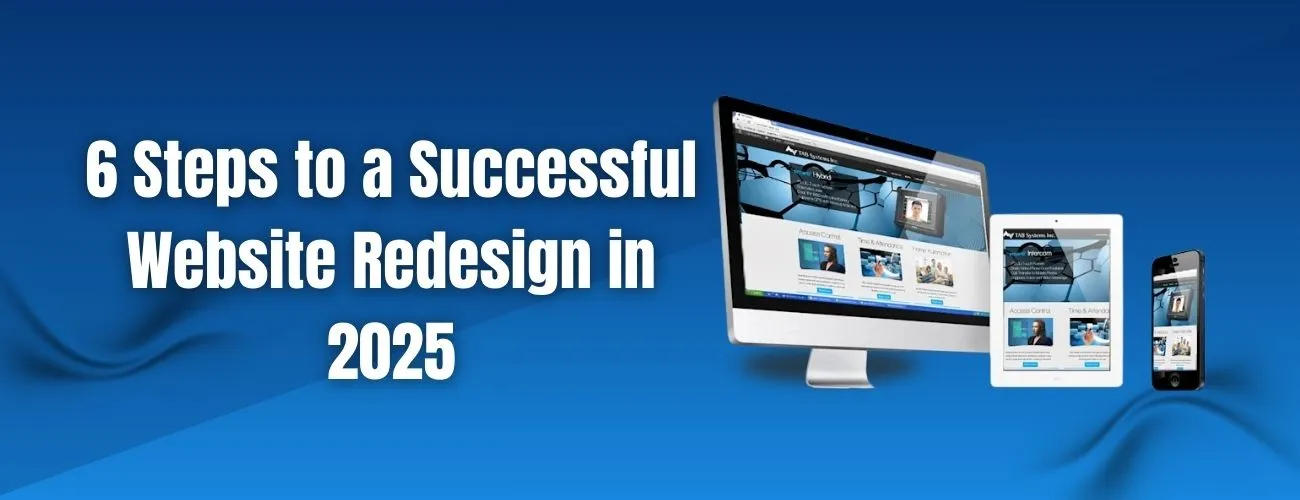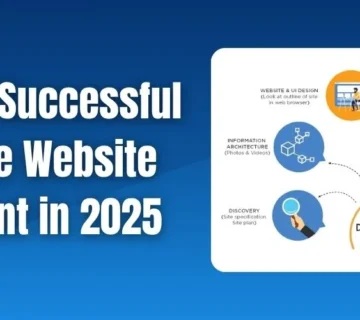Website Redesign: Transforming Your Online Presence
A commercial site is more than a mere website. That is the place where one has their first impressions, builds their trust, and decides to take a plunge into your brand by potential customers. But time, even the greatest, starts to feel a bit stale. This is what website redesign is, one of your best investments in the digital strategy.
Why Would a Business Need to Redesign Its Website?
The technology and the user behavior keep changing. A design that was a wow five years ago may be looking clumsy and slow. A redesign of the website is more than just a visual refresh: it is aligning the digital aspect with the contemporary trends, the expectations of the customer, and, of course, the goals of the business.
Some of the most prevalent reasons why businesses decide to redesign their websites:
- Outdated design that no longer goes with the present brand identity.
- Poor mobile responsiveness or slow-loading design.
- Navigation that confuses users.
- Declining conversion rates or lead generation.
- Change in target audience or service offerings.
The Role of User Experience in a Website Redesign
UX is a concern in the centralized model of success. Every decision made regarding the redesign of the website is made with consideration for how the site’s visitors will perceive it. All smooth navigation, logical layouts, and clear CTAs work together in the course of an intuitive journey.
Users are shown to have an impression in a few seconds, and if things are too crowded for them, or if the menus are too confusing, or if the links are broken, then they will probably leave. The time when a website is redesigned gives the opportunity for resetting this whole journey in a very simple way, as well as engaging.
Mobile Optimization and Modern Needs
The trend of most web traffic having come from smartphones and tablets has made mobile responsiveness no longer a matter that can be treated lightly. In fact, a complete overhaul of site designs can allow one’s site to fit effortlessly across devices, which means faster loading times and easier reading around.
Google’s algorithm gives points for mobile-friendly websites, which means that this kind of redesign for a site will greatly enhance user experience and will hence be instrumental within the search engines.
SEO Advantages of a Website Redesign
It is the lifeblood of digital victory – Search engine optimization. Restructuring a website can be a way to revamp an SEO strategy. By populating with keyword-rich content, possibly improving technical methods and metadata refinement, or perhaps offering the right conditions under which stronger search rankings are possible.
Besides this, during the complete redesign phase to perform an audit of all such pages and important content. The well-set-up and reachable redirects will help you have no broken links but maintain the authority of the domain. A full-scale search engine optimization redesign implies that your site is not just all modern, but it also shares in all the effort of organic traffic.
Branding and Visual Identity.
Your website often turns out to be that all-important first contact that a new potential customer has with you. Visually, when those website visuals do not fall in line with any contemporary branding, it would almost appear at work like an inconsistency in the work. It is during a website redesign that this gets a bit of an update toward fitment with the company message through color, typography, and imagery used.
Strong branding would help build a much stronger recognition and trust factor. As such, it is more probable that a visitor is going to remember your business more strongly when the visuals are very solid and cohesive. The redeveloped website effectively strengthens this relationship, linking it even more closely to your overall brand identity.
Conversion Optimization and Lead Generation
The end goal is performance. The website redesign typically optimizes conversion paths. For example, redesigns involve making forms more user-friendly, strategically placing CTAs, or simplifying checkout.
In the case of service-oriented firms, these redesign endeavors can better showcase client testimonials, case studies, or portfolio pieces. By framing all these aspects into a strong display of social proof and credibility, a website redesign simultaneously builds visitors’ trust and willingness to act.
Content Strategy in a Website Redesign
Content is essential for success on any site. A redesign of your website opens the opportunity to evaluate your messages. Do you convey the appropriate value propositions? Have you crafted engaging headlines? Is the content structured to be read and understood?
Including a blog or resource center also adds value in the long run. Constantly updated content assists in SEO and positions your brand as an authority in the industry. This webpage design reinforces the strategy with a layout that highlights fresh, engaging, and informative materials.
The Process of a Successful Website Redesign
The implementation of a well-structured approach ensures that measurable results can be obtained from the redesign of your site. Structurally, it consists of the following phases:
- Audit and Discovery – Understanding how the site is currently performing, what analytical data to collect, and deficiencies to assess.
- Goal Setting – Defined goals could pertain to greater conversions, improved search engine optimization, and branded marketing.
- Wireframing and Graphics – Layout development with the first half of usability and graphic appeal.
- Content Integration – Old copy that needs to be updated, optimized, and restructured for pertinence and clarity.
- Development and Testing – Responsive coding implementation, extensive testing through various browsers and devices.
Avoiding Common Mistakes
Not all redesigns turn out well, as certain errors may discourage their success. Some of the common blunders to avoid:
- Neglecting SEO during the migration.
- Overburdening the Website Redesign with unnecessarily complicated attributes.
- Ignoring users with disabilities.
- Not defining goals before starting.
- Not testing on multiple devices.
Future-Proofing Your Website
Technology will evolve further as the expectations of users are always changing. Thus, redesigning a website should not be seen as a one-time activity, as it forms part of a digital strategy over time. Continual updating alongside monitoring performance and refreshing contents keep a website relevant.
Building flexibility into your design prepares it for the ease of any changes, including the latest product lines, updated branding, or the introduction of emerging technologies, without much disruption. Website Redesign paves the way for a long-term possibility of change.
Business Impact of Redesigning Your Website
A modern and optimized site affects revenue directly. Most businesses redesigning their websites are now seeing positive results in lead generation, customer engagement, and brand loyalty. Visitors tend to trust a company with a polished digital presence; again, that translates into measurable growth.
Redesigning the site can set apart companies in competitive industries. If potential clients are comparing your business with others, a strong website could be the deal breaker.
Conclusion
Website redesign is not just a change of appearance but a dynamic process that influences user experience, SEO, branding, and conversions. Companies neglecting their websites today are simply giving their competitors a shot at catching up.
With a proper setting of the goals, user-driven design, and detail-oriented approaches enable the company site to turn into a growth engine. If the site appears old, confusing, or simply not delivering, it might be time to start thinking about a full redesign.






No comment